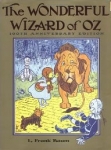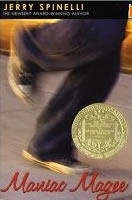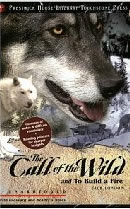|
You and your students are bound to love Readers’ Theater! Readers’ Theater (also spelled “Reader’s Theatre” or “Readers Theater”) is an activity in which students, while reading directly from scripts, are able to tell a story in a most entertaining form, without props, costumes, or sets. This is a reading activity, and students are not asked to memorize their lines. They are, however, encouraged to “ham it up” and use intonation and gestures appropriate to their characters and their characters’ words. |
|
Readers’ Theater serves many useful functions: · It provides repeated reading practice—an important factor in building fluency. Repeated reading practice also improves students’ confidence in, and enthusiasm for reading. It’s an enjoyable change of pace from everyday practice sessions. My students love it! And so do we. Students are so thrilled at their newfound skill that they ask to perform for younger classes. · It’s a wonderful opportunity for children who are used to feelings of failure to provide expertise entertainment for others. · Readers’ Theater scripts cover many different subjects across the curriculum making them versatile. The Internet is a terrific source of entertaining scripts–and they’re often free! The ready availability of online resources allows for easy editing and personalization of individual scripts. I simply copy the script to my word processing program, adapt the script to my students’ needs, and print it up! (Of course, most scripts available online are intended only for educational, not commercial, use.) Don’t be intimidated by the performance aspect. It’s all the excitement of a play without the pressure and responsibility. The students have fun, you have fun, the audience (if you choose to perform for one) will have a great time, and everyone learns! We offer a nice selection of scripts for all different subjects on our sister site, SongsForTeaching.com |
Author: Jamie McElroy
Conquering the Chapter Book

When children hear James and the Giant Peach read to them, they love imagining the horrendous escaped rhino and the mischievous Weather Men that lived in the clouds. They don’t have to worry about stumbling over words they don’t know. They can snuggle up every night and listen to James’ adventure while their imaginations paint the pictures for them. This encourages children to try more books, because they know that they can understand new words from their context — even words they’ve never seen in print.
Letting your child choose his or her own chapter book to read without getting frustrated is made considerably easier with this useful tip from Esmé Codell. The Rule of Thumb goes like this:
|
Have a child choose a page in the middle of the book with a lot of text, and make a fist. Explain to the child that she should not use the fist to punch anyone in the nose. Instead, read the page silently, and if you come to a word you don’t know and can’t guess, put up your thumb. If you find another word, put up another finger, and so on. If you reach the end of the page and between three and five are up, that means the book will be a challenge. The child can decide if she is motivated enough to try to read it anyway (you can offer help), or she can choose to save it for the future. A pleasure read should have 0-2 fingers up. |
This technique is great because it provides a quantifiable method for the child to apply. Nothing is more disheartening than getting excited to read a certain book, borrowing it from the library and taking it home, only to find out it’s too difficult to read independently at that time. Esmé Codell’s suggestion allows children to gauge on their own what books will be appropriate for them.
If you’re looking for a chapter book to read to a group, imagine the youngest age the author intended the book for. If the story is captivating, your more advanced readers will enjoy the book nonetheless.
See our pages on
Reading Aloud, Recommended Chapter Books, and Motivating Your Child to Read for more information.
Codell, Esmé Raji. How to Get Your Child to Love Reading. Chapel Hill, NC: Algonquin, 2003.
To the Original Wizard of Oz, Happy Birthday!

L. Frank Baum is a household name thanks to his relentless perseverance. The Wonderful Wizard of Oz is a culmination of a career’s worth of work. It was published in 1900 after many minor publications and musicals. We all recognize the famous ruby slippers that Dorothy wears on her journey down the yellow brick road, but did you know they’re silver shoes in the book? Red looks better on screen so a minor tweak in the movie turned into one of the most recognizable icons of the story. Little facts like this make reading the book and seeing the movie a great activity for family reading. Use the differences as conversation starters and have children voice their opinions about various changes to the plot or characteristics of the story. What would they do differently if they were directing the movie? What parts of the book were left out or changed and why? Do the changes affect the message of the story?
Oz has captivated imaginations for over a hundred years and still continues to do so. In the time of women’s suffrage, Baum married Maude Gage, who was an active feminist. Her influence on his writing is apparent with strong female leads and comical situations such as the revolution in The Marvelous Land of Oz. He even dedicated The Wizard of Oz to her.
“As they passed the rows of houses they saw through the open doors that men were sweeping and dusting and washing dishes, while the women sat around in groups, gossiping and laughing.
What has happened?’ the Scarecrow asked a sad-looking man with a bushy beard, who wore an apron and was wheeling a baby carriage along the sidewalk.
Why, we’ve had a revolution, your Majesty — as you ought to know very well,’ replied the man; ‘and since you went away the women have been running things to suit themselves. I’m glad you have decided to come back and restore order, for doing housework and minding the children is wearing out the strength of every man in the Emerald City.’
Hm!’ said the Scarecrow, thoughtfully. ‘If it is such hard work as you say, how did the women manage it so easily?’
I really do not know,’ replied the man, with a deep sigh. ‘Perhaps the women are made of cast-iron.”
Baum was an innovator of children’s literature in many ways. Embracing the qualities of Anderson and Grimm’s fairytales, he put his own spin on what a fairy tale should be. The inhabitants of Oz are complex and detailed which makes them relatable. Baum refrained from using extreme violence and love interests since he believed children “wouldn’t find that sort of thing interesting.” Oz and all of its stories became one of the most beloved tales of all time because he wasn’t afraid to keep trying. Imagine if he gave up because his first 15 years of writing didn’t lead to any major success stories. Baum not only wrote a classic fairy tale, he lived one.
“That proves you are unusual,’ returned the Scarecrow; ‘and I am convinced that the only people worthy of consideration in this world are the unusual ones. For the common folks are like the leaves of a tree, and live and die unnoticed.”
Celebrate L. Frank Baum’s birthday May 15th by reading one of the 15 Oz books. Take an imaginary journey but remember, there’s no place like home.
Texting and Literacy

Texting and internet memes must surely be the downfall of formal language, right? Quite a few scholarly studies point to no, actually. While it’s true that conventional English spelling and correct grammar are noticeably absent from the majority of texting conversations, the phonetics are accurate. As literacy advocates, seeing the phrase “C U l8r 2nite” is the equivalent of hearing nails on a chalk board, however one must first understand the correct way to write the phrase before it can be broken down to the text version. Texting also provides an “additional resource for learning about and experimenting with letter-sound correspondences and language, and for reading and ‘decoding’ text.” (Vosloo 2009) The same study also stated, “If our children are showing difficulties with reading and spelling attainment, it would seem that this is in spite of the contribution of textism use, not because of it.” When put into this context, it makes it easier to see that language is evolving not necessarily degrading.
The digital age is upon us and like it or not, faster communication means abbreviating and inventive spelling. Not all teachers view this as a plague of the 21st century. It allows for experimental communication and word play. Most SMS messaging systems allow 160 characters per message. The thought process behind sending a text is more in depth than it appears as far as realizing what needs to be said, how to condense it, and finally how to phrase it so the most information is sent in the fewest words possible. How does this affect the classroom? Teachers need to enforce when and where texting language is appropriate and when conventional English is necessary. Internet celebrity and middle school English teacher, Cindi Rigsbee, sees the front line of this battlefield every day. Instead of ignoring the issue, she addressed it head-on by discussing the Greek and Roman roots of English and eventually leading the conversation down to a popular internet phrase. She also has students translate a barely legible MySpace page into proper English. “We look at Old English, Middle English, and what was contemporary English in the time of Jane Eyre. Then I show them a MySpace page.” (Bernard 2008)
While texting and the language should most definitely not be allowed in the classroom, it is a fact of life in this day and age. What it comes down to ultimately is that texting and internet lingo has a time and a place, much like clothes. Texting isn’t wrong but you wouldn’t wear old sneakers to a formal event, would you?
Bernard, Sara. “Zero-Thumb Game: How to Tame Texting.” Edutopia May 28, 2008. Web. Retrieved April 27, 2010. http://www.edutopia.org/text-messaging-teaching-tool
Vosloo, Steve. “The effects of texting on literacy: Modern scourge or opportunity?” Shuttleworth Foundation Issue Paper April 2009. Web. Retrieved April 27, 2010.
Spring is Here! Help Your Young Readers Bloom

For those with a more active mindset, take advantage of environmental print. Reading on the go, if you will. Children often recognize logos and short phrases of places they like before they understand the phonics behind it. Use this as a springboard to encourage learning new words. Point out what the word starts with and sound it out syllable by syllable.
Reading can be worked into games as simple as "I Spy." Instead of picking a color say something along the lines of, "I spy, with my little eye, something that starts with S!" Rhymes are great for this game too. Scavenger hunts are excellent for encouraging reading and they can be set up relatively quickly. Children will work to solve the puzzle even harder if there is treasure at the end of their quest! (Something small like a favorite snack or small toy.) You can "kidnap" one of their favorite toys so they must solve the puzzle to rescue it. Leave the first clue where they will find it or you could play the part of the innocent bystander and discover the clue. Set it up so each clue is a simple word puzzle that will lead to the next clue. For example, Clue #1 reads "Clue #2 sounds like chairs and starts with the letter s." Clue #3 would be found on the stairs and lead them to the next place.
Tailor the game to the appropriate difficulty for your players. You also control where the game goes so it could stay in the house or the back yard if you wish. Feel free to go all out and incorporate whatever theme the kids are into at the moment like pirates or explorers.
Just like math or science, reading can be fun and active. Enjoy the beautiful weather and get some exercise for the mind and the body. Remember to keep your eyes open for reading opportunities always. What automatic sight reading for fluent readers is may be a new challenge for beginning readers. Make it fun!


.jpg)



